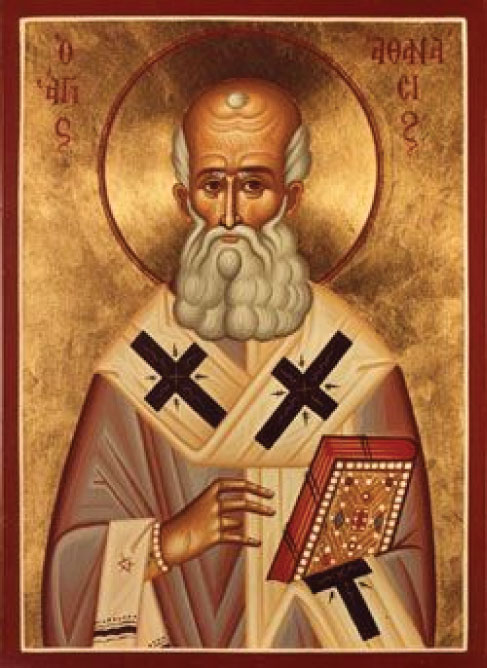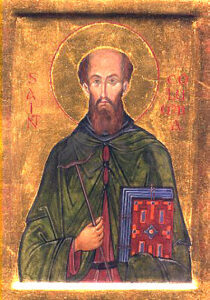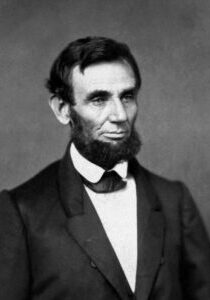Athanasius of Alexandria
296 - May 2, 373
Twentieth Bishop of Alexandria
Twentieth Bishop of Alexandria
From Alexandria, Egypt
Served in
Affiliation: Christian
"Dead men cannot take effective action; their power of influence on others lasts only till the grave….The Saviour is working mightily among men, every day He is invisibly persuading numbers of people all over the world, both within and beyond the Greek-speaking world, to accept His faith and be obedient to His teaching. Can anyone, in face of this, still doubt that He has risen and lives, or rather that He is Himself the Life? Does a dead man prick the consciences of men...?"
The first three centuries following the death of Christ were difficult for believers. As early Christians went forth and spread the message of Christ, there was very little cohesion and unity among these pockets of Christ followers. Partially because of this, differing beliefs or doctrines regarding God, Christ, and the Bible, were everywhere. These differences made it challenging to find agreement on biblical truth, much less create one united church. And this was not all that Christians of the first centuries were facing. Across much of the Roman Empire, and beyond, Christianity was either barely acknowledged as a legitimate faith practice, or outright illegal. The Great Persecution of the third century, under the Roman emperor, Diocletian, was the world in which Athanasius of Alexandria was raised.
Athanasius was born in Alexandria, an important port city in Egypt that was part of the Eastern Roman Empire. Alexandria was second only to Rome during this time, and was the agricultural center of the Roman empire. The exact date of Athanasius’ birth is unknown, but it is believed to be around 296-299 CE. The Great Persecution was especially fierce in Egypt and only came to an end in 313. Constantine (r. 306-337) was the first Roman emperor to convert to Christianity, making Christianity legal in the empire in 313. Under Constantine, the church became protected for the first time. While Athanasius’ early years were a dangerous time of persecution for professing Christians, his young adult life was an exciting and challenging time of change for those of the Christian faith.
Little biographical information is known about Athanasius’ early life. It is believed that he was likely self-taught, but was known to be intelligent and eloquent.1 It is not known if his parents were Christians or the socioeconomic status of his family. Throughout his life he commonly portrayed himself as both poor and ascetic.2 His first mentor was a man named Alexander (d. 326 CE), one of the most important bishops in the Eastern Empire. Alexander took a special interest in Athanasius’ education and his potential to be an important part of the church. Athanasius served as a deacon under Alexander and later became a close advisor to him. Alexander would have great influence over Athanasius’ life for many years and was a key figure in him becoming a powerful church leader, now known as one of the early fathers of the church.
As a deacon and close advisor of Alexander, Athanasius was greatly affected by the doctrines that Alexander felt passionately about. Both Alexander and Athanasius were vocalabout what they deemed as dangerous teachings by some members of the church. Both men were outspoken about a key issue facing the church in the fourth century- the deity of Christ. They stood in opposition to another clergyman from Alexandria, Arius (c. 260-336). Arius was opposed to Trinitarian Orthodoxy, the Christian doctrine that God is one being existing in three co-equal and co-eternal persons; the Father, the Son, and the Holy Spirit. In Arius’ view, Jesus was not fully God. Athanasius staunchly argued that this view if Jesus was dangerous. He knew, and rightly so, that the full deity of Christ and the Holy Spirit is critical to the Christian faith. This doctrine promoted by Arius became known as Arianism and resulted in the Arian Controversy; a lengthy conflict in belief that created serious schism in the fourth century church.
Athanasius spent his adult life fighting against this heresy. He did so not for power or political gain, but because he viewed this as a “battle for the souls of men and women…[he] rightly knew that upon one’s view of Christ hung one’s eternal destiny.”3 The Arian Controversy would spread across the entire Eastern Empire, leading to a great push to find some agreement and cohesion in the church. Emperor Constantine was particularly interested in calling a church council to address Arianism, as well as other controversies in doctrine and belief. In 325, the first worldwide council of the church began at Nicea. The Council of Nicea lasted from May to July 325, and though debates were heated and agreement was not unanimous, the council eventually declared the full deity of Christ of Christ in what is now known as the Nicene Creed. This council and the work accomplished at Nicea are considered a turning point in Christian history.
Athanasius was consecrated as bishop in 328 ushering in the time of true struggle and hardship that he would face in his adult years. Athanasius unapologetically held to his beliefs, especially regarding the full deity of Christ. He was unwilling to bow to political pressure to accept into the church those who held to heretical beliefs. Constantine sought to end conflict within the church and to welcome all who wanted to be admitted, regardless of what they believed. However, “to Athanasius, ‘the heresy which attacks Christ has no communion with the catholic church’.”4 His unwavering stance against heresies, specifically Arianism, caused enemies to rise up against him and seek to bring him down in whatever way possible.
Beginning in 330, these enemies began to bring charges against Athanasius. There were several charges brought, all seemingly unfounded, and though Constantine summoned Athanasius to answer to these charges, he was successful in defending himself and was found guilty of no wrongdoing. Later, Athanasius was accused of violence and threatening to cut off the grain supply from Egypt to the capital of Constantinople. Though he sought to plead his case to Constantine, this time, he was unsuccessful. After speaking honestly, and reportedly in a quite hostile manner to the emperor, he was exiled for the first time to Trier in Gaul. This would be the first of five exiles Athanasius endured in the years of his ministry. These exiles were not without difficulty, but he remained popular with the Christians of Egypt and had many faithful followers across the empire. His first exile lasted two years then he was allowed back to Alexandria in 337 after the death of Constantine. It was not long before Constantius (r. 337-361), son and heir of Constantine, made accusations against Athanasius. The result was Athanasius being replaced as bishop of Alexandria and exiled yet again.
Athanasius faced three more exiles in his lifetime. But throughout these years of exile and uncertainty, he remained committed to his followers and serving God. He was not completely cut off from those who supported him; he was actively writing letters of instruction and encouragement to the churches, as well as writing many of his most well-known works during these years. Despite his circumstances, “he sought to keep the perspective of eternity in the forefront of his mind.”5 Though his writings were plentiful, some of his best known works are, The Life of St. Antony, Against the Heathen, and The Letters (to Sarapian). His work, On the Incarnation, is considered one of the founding documents that developed Greek Orthodox theology. His time in exile, often spent in the deserts of Europe, also led to improved relationships between clergy and the monks in the Eastern Empire. Athanasius remained focused on his calling and convictions despite his circumstances.
In his later years, Athanasius turned his attention to the controversy surrounding the Holy Spirit, much as he had in earlier years fought for the recognition of the deity of Christ. These two issues were of utmost importance to Athanasius and were largely what led him into conflict with others in the church. What is remarkable about Athanasius is that he was wholly focused on biblical truth. He neither sought conflict with others or political power. But he was willing to go to any length, face any consequence, including exile, because he knew that what was at stake was the very soul of believers. He did not seek to punish those who collaborated with his enemies, he only hoped that they too would turn from their wrong theologies and embrace the truths determined at Nicea. He was known to be firm and unwavering in his beliefs and the way he conveyed these theological truths to others, but he was not cruel or seeking of retribution, despite the many hardships he faced in his lifetime from those who opposed him.
Athanasius loved God, believed in the deity of Christ, and the immutability of the Bible. His life was fully devoted to serving God solely for the purpose of speaking truth to those who were unbelievers and those that were followers of false doctrines. He wanted unity in the church, but not at the cost of watering down the word of God. He was known as Athanasius Contra Mundum—Athanasius against the world. After decades of ministry, false accusations, an abundance of enemies and five exiles, he died in May 373. He was a good and faithful servant of God until the very end. Still today, he is considered one of the most significant figures in the history of Christianity.
Notes:
1 Peter Barnes, Athanasius of Alexandria: His Life and Impact. (Christian Focus Publications Ltd, 2019), 35.
2 Ibid, 36
3 Michael A. G. Haykin, foreword to Athanasius of Alexandria: His Life & Impact (Christian Focus Publications Ltd, 2019), 18.
4 Barnes, 74
5 Barnes, 90




